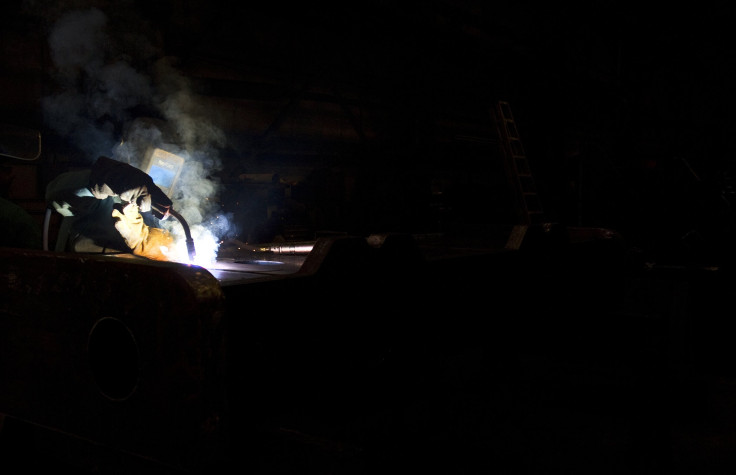OSHA Rule To Protect Workers In Construction, Manufacturing Plagued By Delays

Federal regulators are delaying health-and-safety rules that advocates say would save workers’ lives. The U.S. Office of Management and Budget (OMB) has spent eight months reviewing a proposal to strengthen rules on beryllium exposure, overshooting its deadline by five months and counting. It’s only the latest stumbling block for regulations that already have been more than 13 years in the making.
As many as 134,000 workers in the U.S. are currently exposed to beryllium -- mostly in the aerospace, ceramics, construction and electronics industries -- according to research by the National Institute for Occupational Safety and Health. When the naturally occurring metal is ground into dust and inhaled, it can cause chronic beryllium disease, a potentially fatal lung disorder. Some people are more sensitive to beryllium than others, but between 1 and 3 percent of all people exposed to substance develop the disease, according to the Energy Department.
A new rule on beryllium exposure is sorely needed, says Keith Wrightson, a workplace-safety expert at Public Citizen, a consumer-advocacy group pushing for updated beryllium regulations for more than decade. As it stands, the Occupational Safety and Health Administration’s (OSHA’s) existing beryllium exposure limit of 2.0 micrograms per cubic meter dates from research conducted in the 1940s. It is four times higher than the limit in China, a country not known for especially strict workplace-safety rules.
If OSHA tightens its beryllium standard, at-risk workers would comply by wearing respirators and protective clothing, Wrightson says. His group wants a new exposure limit of 0.1 micrograms per cubic meter. Since the 1970s, the National Institute for Occupational Safety and Health has backed a limit of 0.5 micrograms per cubic meter.
In spite of the risks, “it’s just typical regulatory delay” at OSHA, Wrightson says. Public Citizen and the largest chemical workers’ union first petitioned the agency for a lower exposure limit back in September 2001. While the long wait may be head-scratching to outside observers, it’s all too common for an agency that averages from eight to 12 years to create and finalize new standards, he says.
Once OMB finishes its review, OSHA has to issue a notice of proposed rulemaking and take in public comments before issuing a final rule. That process could take another year at minimum.
Some of the delay at OSHA stems from the agency’s compliance with a strenuous review procedure that Congress, then under Republican control, approved in 1997. The Small Business Regulatory Flexibility Act -- applicable only to OSHA, the Environmental Protection Agency and the Consumer Financial Protection Bureau -- requires each of the agencies to undergo a special consultation process with business representatives before issuing new rules.
Then there’s the political climate, teeming with accusations of government overreach.
“The hostility toward regulations runs deep,” Wrightson says. “The phrase ‘regulatory burden’ is ingrained in everyone’s mind.”
Under President Barack Obama’s administration, OMB has played an increasingly active role in rulemaking, often picking and choosing when proposed regulations see the light of day. Critics such as former Sen. Tom Harkin, D-Iowa, have slammed the agency for valuing political expediency over worker safety. A similar OSHA proposal -- a rule to reduce workers’ exposure to cancer-causing silica dust -- was held up at OMB for more than two years. The rule has yet to be finalized.
OMB did not respond to a request for comment.
Since 2000, the Energy Department has operated its own chronic beryllium disease prevention program, which relies on an exposure limit 10 times as stringent as OSHA’s.
In 2012, OSHA cited the Navy for exposing hundreds of workers to beryllium and other toxic materials such as cadmium and lead at an aircraft hangar in Coronado, California, a resort town outside San Diego. And in Tallevast, Florida, clean-up is ongoing at the site of a beryllium plant that contaminating the surrounding groundwater and soil while manufacturing weapons from 1961 until its closure in 1996. Hundreds of workers are believed to have been exposed to the substance there, too.
© Copyright IBTimes 2024. All rights reserved.






















